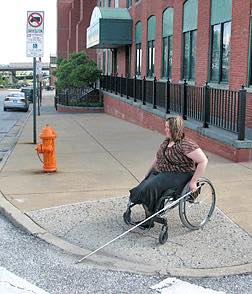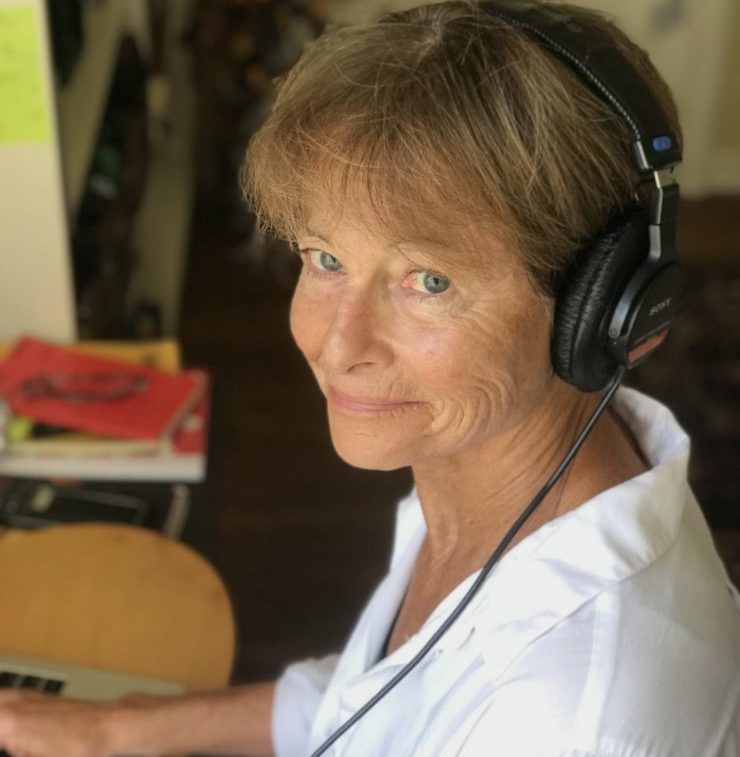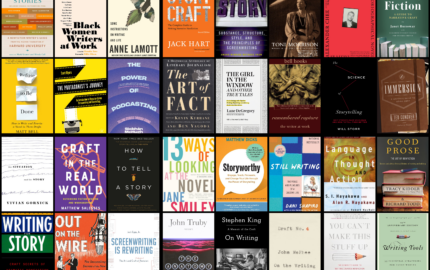The email response to my story pitch came from the senior producer. It read, more or less:
We want this. But do you have a clue how to do it?
The actual wording was kinder, but it was the right question to ask. Since deep into the last century I’ve worked as a print journalist, a job description that ceased to mean much as screens overtook ink, but never mind; I’ve always reported and written for the reading eye. Then, last year, I rearranged my life to include long walks through the city. During these walks, I listened to podcasts. Earbud cords dangling, gaze unfocused, barely noting stoplights, I finally had time to remember why I love well-reported radio storytelling – how wholly the outside world vanishes when voices and sound are literally in your head.
The variety of podcasts these days is insane; this spring Apple was offering more than a half million different programs. I skittered around quite a few, sampling those recommended by friends, and eventually settled on 99% Invisible, a podcast adored by many smart people half my age and hosted by its creator, Roman Mars. Roman’s voice is dark-honey perfect for radio, but the real draw is the intriguing trajectory of the stories he tells. They’re about design, things right around us that you might otherwise never notice or wonder about: How did air conditioning start? Why is there a punctuation mark called the Interrobang? But they soon zigzag into human behavior, quixotic invention, social change, marvelous odd characters in history. They almost always hooked and surprised me, and before too long I realized that I didn’t just want to listen to these stories. I wanted to write one.
You see the challenge here. “Write” is not the same word in podcasts as it is for the print pieces that shaped my career. Sure, I wrote sentences, as the 99% producers prodded, coached and corrected my many blunders through the 6,000-word script for my half-hour episode, which aired this summer. But as every radio veteran knows, assembling an audio story is mostly an exercise in listening –not once, to the person you’re interviewing or the archival recording you were lucky enough to find, but again and again and again. Audio makes the senses work differently, for a longtime writing reporter who has learned to use words to paint mental pictures. It’s not that I stopped seeing things. It’s just that I had to start learning how to see with my ears.
This was the episode I pitched: the guerilla origins of curb cuts, those slopes on sidewalk corners that let people in wheelchairs roll to the next block on their own, without having to be lifted over a curb.
I’d been drawn to this story for a long time. Its key drama and characters were set in 1970s Berkeley, a few years before I started college there. A library on campus had collected oral histories of the birth of the national disability rights movement – for that’s really what curb cuts were about. (Standard exercise in figuring out whether you’re contemplating a good long-form piece: What’s this about? Fine, now what’s it really about?) My prospective main character was dead, but he was on those library tapes, and other principals were alive, including the main character’s 98-year-old mother.

I started asking friends if they knew why there were curb cuts in their cities’ sidewalks. If they were under 50 and had no intimate connection to disability, they invariably answered: “For baby strollers and wheely suitcases?” Or: “What’s a curb cut?”
So I had an unfamiliar design story with a big phenom behind it, plus voices available to tell the story in sound. I pointed this out in a pitch email, rewrote the email five times because I was nervous, and finally sent it to the 99% Invisible people. Who said, essentially, “Yep.” Then they invited me to their studio in San Francisco so the producer assigned to my episode, a memorably patient woman named Delaney Hall, could teach me how to use all the things I would need to use.
Because this, it must be said, makes reporting a podcast story deeply different from the reporting I’m accustomed to: there are things. You can’t interview without them, and they have buttons and sliders and multiple cords that must fit into multiple plugs before you can get to work. They have gauges you have to keep checking while you’re simultaneously making sure the clock doesn’t bong or a passing garbage truck doesn’t grind its gears in the middle of an interviewee’s excellent remark. And the blinking red light! Oh God, the blinking red light. I still have dreams about it.
But I taught for years at Berkeley’s journalism school, where I watched scores of students become competent at use of the things, so I was game to try. I bought my own, settling on Pretty Good as the appropriate price/quality level. Armed with my new PG foot-long microphone ($250), digital recorder ($200), and headphones ($100), the Delaney demonstrated the basics:
- Hold the mic below and to the side of your interviewee’s mouth; it’s heavy, but keep it steady even when your arm gets tired.
- Watch the volume level: if it’s too low, well, duh; too high, and the sound will be messy.
- Wear the headphones while interviewing; you’ll feel weird at first, but you’ll adjust.
And so we rolled. Delaney came along to handle the recording for the first two interviews, which included a clock that bonged every half-hour and and a rapid-transit line so close to the interviewee’s apartment that it sounded like train cars were being hurtled through his front door.
As I said: Delaney is patient. She would smile, lower the microphone briefly, and say in the gentlest voice: “I just need you to repeat that.” When you are a novice at audio this is a crucial sentence, one of a few I strove to commit to memory. For a print journalist reporting in audio, it was like studying the opening pages of a foreign language phrase book: You grew up thinking you knew how to obtain this information, but now you have to learn essential new verbiage.
Would you please say your name and title, starting with ‘I’m….’?
Would you please describe what we’re looking at?
Tell me more about that?
The last is a time-honored interview query for the writing reporter. But Delaney had to remind me that evocative details and connections are useless for audio if they’re just piling up in your notebook. You need sound. If the interviewee’s phrasing was problematic or the infernal clock bonged, you need to get it again: more, stronger, better.
Oh, and this as part of your interview:
I would be grateful if you would erase from your memory the two minutes I just spent asking that unbelievably wordy and complicated question, such that your entire considered response, after thinking it over, was: ‘Yes.’
This interviewee was gracious about letting me back up and try again. I am also indebted to the former state senator who looked on without comment as I glanced at my recorder, an hour into her pitch-perfect account of a dramatic turning point in American curb cut history, and remembered that THE BLINKING RED LIGHT DOES NOT MEAN ‘RECORDING,’ YOU IDIOT, IT MEANS ‘PREPARING TO RECORD.’
So much face-palming. So much cursing.
When my reporting wound up after many weeks of interviews, I had a lot of sound. I’d started to like working with the mic out and headphones on; it made me feel sort of tactical. I had not only collected many hours of conversation but also the sound of wheelchair motors, wheelchairs in traffic, and talking-elevator cues for the blind. I learned that the bottomless storage unit of the internet becomes a whole new resource once you close your eyes, as it were, and explore just for sound. Here was Jerry Lewis being awful (relevant, trust me), and demonstrators chanting, and the first President Bush making disability history on the White House lawn.
In my little office at home I have three wire clotheslines attached against one wall. My prep-for-writing routine involves printing out all interviews and notes, re-reading everything, drawing arrows to good material, and clothes-pinning up the printouts in alphabetical order. Then I stare at them all at once. I used to think this was like listening to a story’s voices getting together to yell at me about what I was supposed to say.
...for a writer, this is another part of learning to script an audio story: it’s not just the words that matter, but how the words were said.
But as I read through the Curb Cuts interviews and started clothes-pinning – 99% provided a transcript service, so these were verbatim, and long – I realized my usual routine was useless. I was actually going to have to listen again to the voices, headphones on, over and over, one plausible section at a time.
It seems so obvious, in retrospect. But for a writer, this is another part of learning to script an audio story: it’s not just the words that matter, but how the words were said. Is her tone adamant in the right place? Does he chuckle where it underscores his point? When she first says “iron lung,” does she enunciate clearly enough to be understood by someone too young to remember iron lungs?
There were recorded passages I must have listened to 15 times, both to settle on the exact excerpt and to mark start-and-stop places in the digital sound files I had emailed to Delaney:
Delaney, is this working?
Delaney, would you mind listening to this paragraph?
She remained unflappable:
Too formal.
Pare this down.
Make this less writerly.
This foreshadowing bit—nah, too elusive for audio.
I pared. I informalized. I moved stuff around. Mostly I tried to stay out of the way of the storytelling, something I’ve always taught students to do. But for this medium those voices truly do tell the story; your own sentences are intros, clarifications, bridges amid the audio. Minimal, that is. Background. Almost entirely … not the point.
I’m an agonizer when I write, cursing my fate, my text, my dreadful judgment in having imagined this might have been a decent story idea. But assembling the podcast script was more like working a good jigsaw puzzle. My husband took note. He kept waiting for that moment when I slink away from the story clotheslines and declare the current project undoable. (Note to students: this always happens, and it always gets done.). With my podcast story, that moment never came.
OK, there was one surge of terror. At 99% they do a thing no magazine has ever asked of me: once you’ve completed a draft script, they call you into the office, virtually or in person. Then you and the show host do a full read-through of the script, pausing for rough-cut sound in the appropriate places, while you are surrounded by – picture this – a whole table of experienced podcast producers, plus a couple more remotely onscreen, all of them listening. They’re typing comments into a shared Google doc as you read. You’re forging along, clearing your throat and trying to make your voice sound remotely as radio-worthy as Roman’s, and up pops a comment balloon:
I don’t see why we need this part.
We didn't. They were right. Every time.
Audio is pithy. It is visceral. And if the right people prop you up along the way, it can be exhilarating to try.



